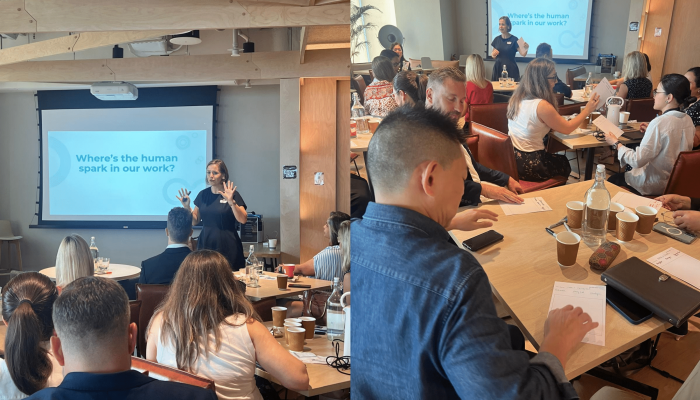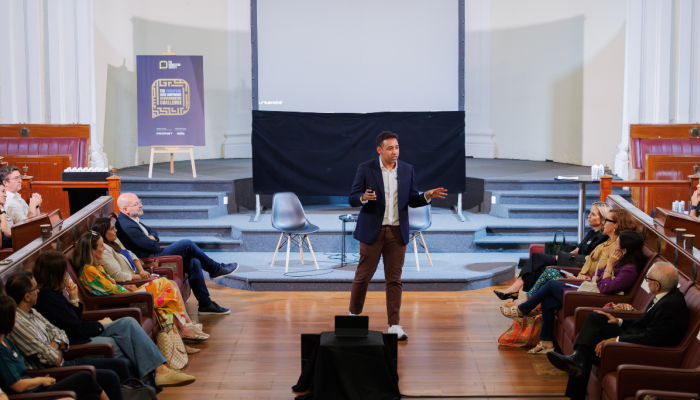At the lowest point of the war, Winston Churchill said the only thing that would save us was ‘corkscrew thinkers’.
People who thought differently.
We had less soldiers, less tanks, less planes, less of everything than the enemy.
If we carried on thinking in the conventional, straight-line way we must lose. So we needed people who didn’t think in the conventional straight-line way.
We needed corkscrew thinkers.
People who could approach a problem inside-out.
People who could look at a problem and see it as an opportunity.
What we would now call creative thinkers.
Churchill’s corkscrew thinkers gave us Bletchley Park, which cracked the ‘unbreakable’ Enigma code and won the Battle of the Atlantic.
They gave us the Sten gun, made from bicycle pumps by a childrens’ toy manufacturer.
They gave us anti-shipping mines made from gobstoppers, which sank Japanese warships.
They gave us a bomber without guns, made of wood, which the enemy couldn’t catch.
They gave us an inflatable army made of balloons which fooled the Germans about where the D Day invasion would happen.
They gave us a dead body washed ashore with ‘secret’ information, which caused the enemy to move his forces to a harmless location.
Luckily for us the enemy didn’t seem to have any corkscrew thinkers.
They didn’t think they needed them.
So that was our secret weapon: corkscrew thinking, aka creativity.
But where do you find corkscrew thinkers?
Can you hire them, or is it possible to learn it?
Well. Like everything, the answer is yes if you want to.
Creativity is all around us.
We can choose to see it or ignore it.
We can exercise our creative muscle just as we can exercise any other muscle.
If we don’t exercise it, it atrophies and dies.
But if we do exercise it, it grows stronger and stronger.
So what we need to do is learn to spot the creativity around us, everywhere.
At work, on the train, at breakfast, in the street, at dinner, in the shops.
As we begin to spot it, we see it everywhere.
We can learn to discuss it, to argue about it, to disagree, to reinterpret.
And pretty soon creativity comes into our conversation with others.
Pretty soon we can influence them into spotting it, too.
We have a working creative muscle.
That’s where this book should help you get started.
On all the different ways you can experience it, all the different places you can find it.
And none of it is in art galleries.
Real creativity doesn’t live in specialist museums for dead art.
Real creativity is alive, happening everywhere, every day.
That’s why Churchill said corkscrew thinkers were his secret weapon.
That’s why Bill Berbach said “It may well be that creativity is the last unfair advantage we’re legally allowed to take over the competition.
Creativity, once you’ve learned to spot it, is your legal unfair advantage.
(And how to cure it)
But it doesn’t just leap out at you, it’s not labelled ‘creative’.
You have to spot it, interrogate it, question everything.
Even the most mundane things.
Are you reading this on a laptop, if so why do the top row of letters on the keyboard begin QWERTY and not ABCDE?
What is the reason for that and what can we learn from it?
Have you got a pen on your desk, where did the idea of a ballpoint come from, what can we learn from that?
Have you got a drink, how do we raise water from sub-Saharan Africa without machines or making anyone work?
Thinking about that could change our approach to work.
Are you wearing glasses, how do we get the right prescription glasses to millions of people when there are only 6 opticians in the whole country?
How would we approach that problem?
Exercising the mind is like exercising the body.
We don’t just do it once and it’s done, we have to do it regularly to see any benefit.
That’s how we develop our creative muscle
The more we learn to look everywhere, to see it everywhere, especially in the most unexpected places, the better we’ll get.
That’s how we avoid sleepwalking through life missing all the creative possibilities.
That’s how we cure creative blindness.
The 'corkscrew thinking' story was taken from Dave's latest book Creative Blindness. The 'how to cure it' section was written by Dave, exclusive for Marketing Society members.
To claim your book discount use code CREATE25: order now
This article first appeared in issue 1 of new members-only Marketing Society publication EMPOWER. Members can read the issue here. If you've forgotten your login details please email our Editor.



